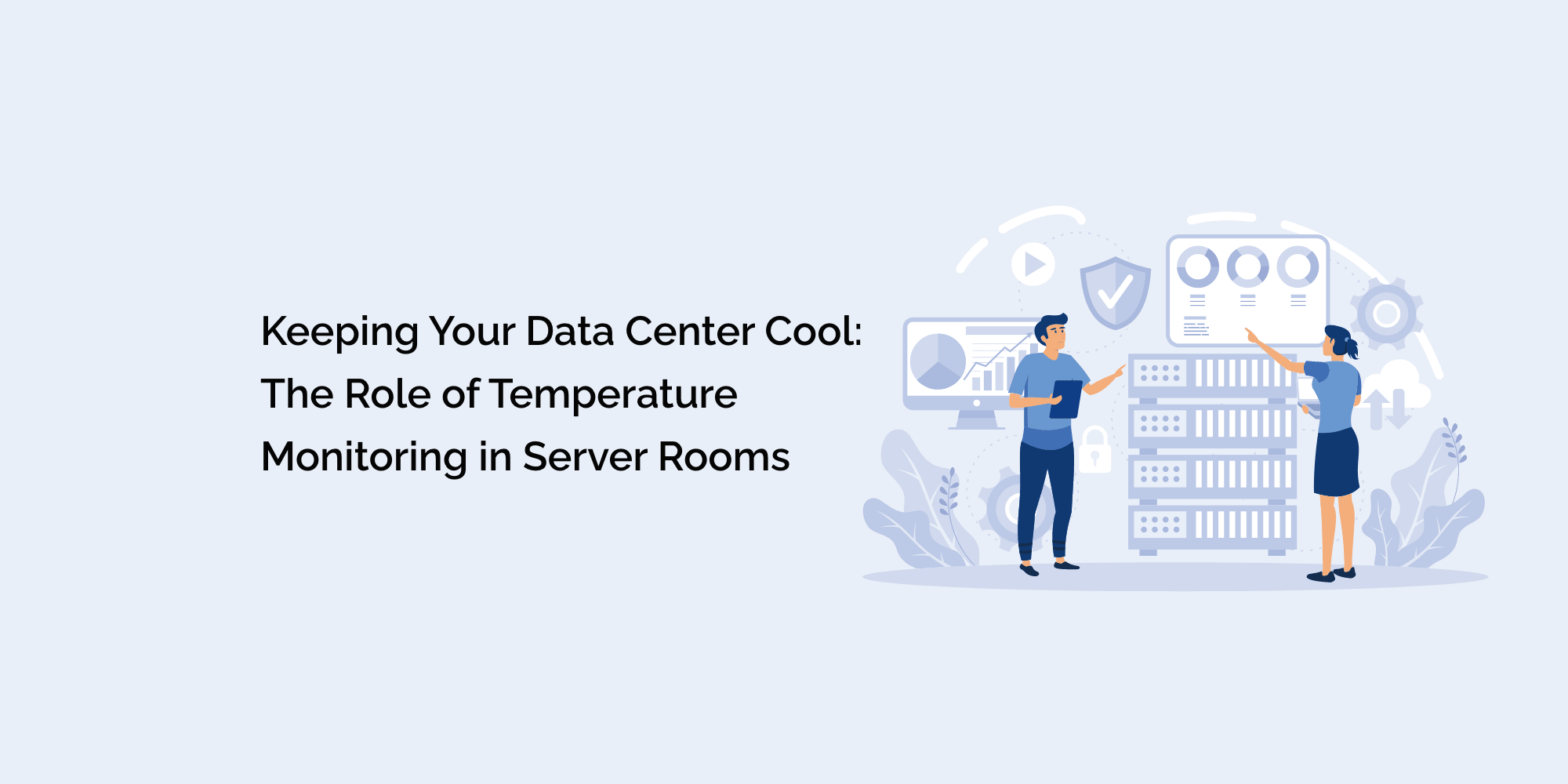In the era of digital transformation, data centers play a pivotal role in storing, processing, and managing vast amounts of critical data for businesses and organizations. The reliable performance and longevity of data centers heavily depend on maintaining optimal environmental conditions, particularly the temperature within the server rooms. As data centers continue to scale in size and complexity, efficient temperature management becomes crucial to prevent overheating and potential hardware failures. Temperature monitoring emerges as a vital tool to ensure data centers operate at peak efficiency while safeguarding the integrity of valuable data. In this comprehensive blog, we will explore the significance of temperature monitoring in data center server rooms, the impact on data center performance, and the best practices for effective temperature management to keep your data center cool.
The Importance of Temperature Monitoring in Data Center Server Rooms:
Temperature monitoring in data center server rooms is essential for various reasons:
-
Hardware Reliability: Modern data centers house numerous high-performance hardware components, such as servers, storage arrays, and networking equipment. Temperature monitoring ensures these components operate within the recommended temperature range, enhancing their reliability and longevity.
-
Preventing Hardware Failures: Overheating is a common cause of hardware failures. Regular temperature monitoring helps administrators identify potential hotspots and take corrective actions to prevent failures and costly downtime.
-
Energy Efficiency: Efficient cooling management based on real-time temperature data allows data centers to optimize cooling systems for energy efficiency, reducing operational costs and environmental impact.
-
Proactive Issue Detection: Early detection of temperature fluctuations enables administrators to take immediate action and prevent critical issues before they escalate.
- Ensuring Data Integrity: Temperature monitoring contributes to the protection of valuable data by reducing the risk of hardware failures caused by overheating.
The Impact of Temperature on Data Center Performance:
Temperature directly influences the performance and overall efficiency of data centers:
-
Thermal Throttling: High temperatures can trigger thermal throttling, a mechanism where servers reduce performance to prevent overheating. This can lead to slower data processing and response times.
-
Hardware Degradation: Prolonged exposure to high temperatures can lead to the degradation of hardware components, reducing their efficiency and lifespan.
-
Cooling System Efficiency: Efficient cooling systems maintain optimal temperatures, allowing servers to function at their best performance levels.
- Data Center Density: As data centers become more compact and dense, effective temperature management becomes even more critical to prevent hotspots and maintain uniform cooling.
Best Practices for Effective Temperature Monitoring in Data Center Server Rooms:
To ensure the data center remains cool and efficient, follow these best practices for temperature monitoring:
-
Strategic Sensor Placement: Install temperature sensors strategically throughout the data center to monitor temperature variations effectively. Place sensors near critical hardware components, cooling equipment, and potential hotspots.
-
Redundant Monitoring: Implement redundant temperature monitoring systems to ensure continuous monitoring, even during system failures or outages.
-
Regular Calibration and Maintenance: Periodically calibrate temperature sensors to ensure accuracy and reliability. Regular maintenance ensures optimal sensor performance.
-
Remote Monitoring and Alerts: Utilize temperature sensors with remote access and alert capabilities for immediate response to temperature fluctuations.
-
Analyze Temperature Trends: Regularly analyze temperature data to identify trends and make informed decisions about cooling strategies.
-
Integration with Monitoring Platforms: Integrate temperature monitoring systems with existing infrastructure management platforms for centralized and streamlined data analysis.
-
Disaster Preparedness: Develop a comprehensive disaster preparedness plan that includes protocols for temperature-related emergencies.
- Staff Training: Educate data center staff on temperature monitoring procedures and the importance of cooling efficiency.
Leveraging Technology for Advanced Temperature Management:
Data center administrators can leverage technology to enhance temperature management and efficiency:
-
Environmental Sensors Integration: Integrating temperature sensors with other environmental sensors, such as humidity and airflow sensors, provides a holistic view of data center conditions. This information helps optimize cooling strategies and ensures an environment conducive to efficient data center operations.
-
Artificial Intelligence (AI) and Machine Learning (ML): AI and ML technologies can analyze historical temperature data and identify patterns that might lead to potential temperature-related issues. Proactive measures can then be taken to prevent downtime.
-
Remote Temperature Monitoring Solutions: Real-time temperature monitoring solutions offer immediate access to temperature data and alerts. These solutions often include wireless sensors, cloud-based data storage, and mobile applications for remote access and notifications.
- Internet of Things (IoT) Enabled Sensors: IoT-enabled temperature sensors can transmit data to a central monitoring system, allowing real-time access to data from anywhere.
The Role of Temperature Monitoring in Data Center Cooling Efficiency:
Efficient temperature monitoring plays a significant role in data center cooling efficiency:
-
Precise Cooling Management: Real-time temperature data helps administrators precisely manage cooling systems to maintain optimal temperatures.
-
Cooling Optimization: Monitoring enables administrators to fine-tune cooling systems, optimizing energy consumption and reducing operational costs.
-
Preventing Cooling Overhead: Effective temperature monitoring prevents unnecessary cooling, ensuring cooling resources are utilized efficiently.
- Improved Airflow Management: Data center administrators can use temperature data to identify and rectify airflow issues that can impact cooling efficiency.
Conclusion:
Temperature monitoring is paramount in ensuring the reliable performance and uptime of data centers. By proactively monitoring temperatures, administrators can prevent hardware failures, optimize cooling efficiency, and maintain hardware reliability. Following best practices and leveraging advanced technologies such as AI, ML, and IoT empowers data center administrators to achieve efficient temperature management, prevent downtime, and keep data centers cool and operational 24/7.
As data centers continue to evolve and handle increasingly complex workloads, temperature monitoring remains a foundational element in ensuring seamless operations and safeguarding the integrity of critical data.








